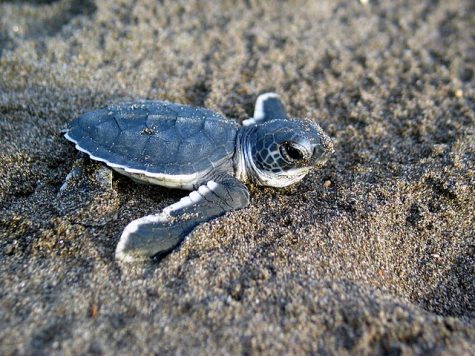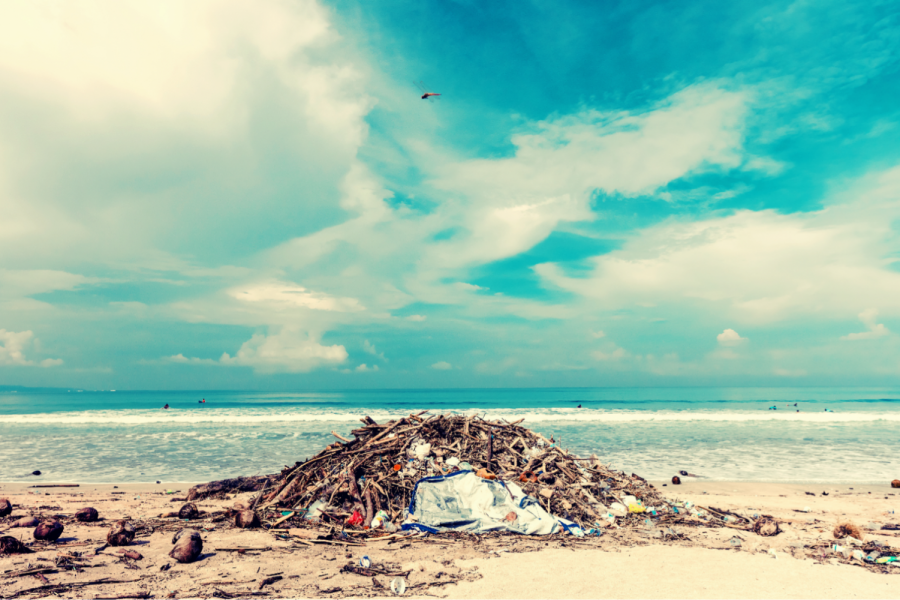We Need to Save the Ocean. Like, Yesterday
March 17, 2021
You’ve heard it all before: the oceans are polluted, the sea turtles are dying, etc., etc., right? But did you really stop and think about what this means for humans, the environment, and the world?
As Captain Paul Watson reports, “The ocean is the life support system for the planet, providing 50% of the oxygen we breathe and regulating climate.” The ocean provides a significant source of oxygen. Thus, the diminishment of ocean-generated oxygen may pose dire consequences. Scientists predict that by the year 2100, we can expect to lose about 7% of our oceans’ oxygen. That may not seem like much, but it is enough of a drop to pose some serious impacts, including reduced oxygen levels for marine life, and an increase in natural disasters such as avalanches and cyclones.
When will these repercussions begin to occur, you may ask? Well, we are already seeing negative changes to our beautiful ocean and its inhabitants. For example, 12-14,000 tons of plastic are ingested by North Pacific fish yearly, and 100 million marine animals perish each year from our plastic waste. A 2014 article reports that by 2024, there will be more landslides and fewer rivers, and mountain glaciers will start to disappear as a result of an increase in ocean temperatures. Severe thunderstorms, hurricanes, and floods will cause small towns and cities to be uninhabitable. Further, up to 80% of marine life will suffer due to plastic pollution. By 2050, there will be more plastic than fish in the sea.
Plastic waste is a big problem that our oceans face. Think about how much plastic you use on a daily basis. Now think about how much the world uses. About 8 million pieces of plastic are deposited into the ocean every day, causing 100% of baby sea turtles to have plastic in their stomachs.

This statistic shows that this cute lil’ peanut has plastic in his stomach! But not just him, 1 in 3 fish caught to be eaten contain plastic, which means that humans are consuming plastic! People must put an end to the exacerbation of the oceans’ conditions, as it is causing numerous repercussions upon our sea life.
However, plastic pollution is only one of the oceans’ many threats over recent years. The seven biggest threats to the ocean, are overfishing, shark finning (overfishing sharks for their fins), ocean acidification (a result of increased CO2 concentration in the ocean due to the burning of fossil fuels), coral bleaching (coral dying due to a rapidly warming ocean — leaving our fish friends with no homes), global warming, which causes dead zones (parts of the ocean that don’t support life due to a lack of oxygen), mercury pollution, which is caused by the use of coal plants, and plastic pollution. This all seems depressing, but there may be some hope, “Recovery rates across studies suggest that substantial recovery of the abundance, structure, and function of marine life could be achieved by 2050 if major pressures—including climate change—are mitigated.” Of course, we can only expect this kind of positive turnaround if we support world leaders, companies, and organizations that will act to reverse the damage.
Everyone has pitched in to destroy our beautiful oceans, and now the time has come for everyone to help restore them. Check out this article by Oceana, which suggests actions such as beach cleanups and reducing plastic usage, or do some research to see how you can help. No action is too small. If we all work together, I believe we can save our oceans before the damage becomes irreversible. The ocean is not going to save itself.




